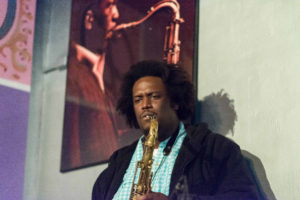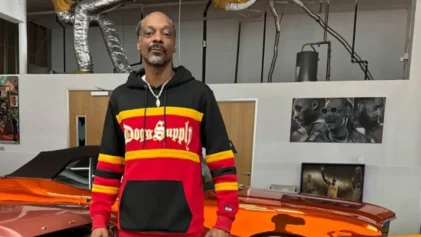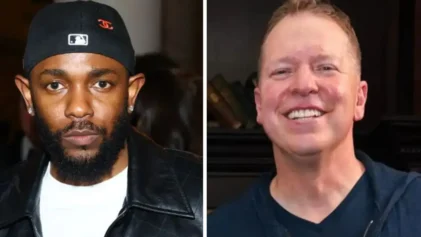
Washington, 34, is getting a rare bit of mainstream shine for a relatively young jazz artist, coming off his inspired contributions to Lamar’s new masterpiece. And he’s using it to full effect, releasing his own new album, “The Epic,” next week that is an intoxicating brew of new age and old school, with some modern swagger thrown in for good measure.
There was a time, not so long ago, when jazz and rap would have been an unusual pairing. But then forward-looking rappers like A Tribe Called Quest and De La Soul started using jazz samples in their tracks in the ’90s, giving their sound a sophistication that was a far cry from the monotonous drum machine beats of Run DMC’s heyday. For a jazz artist like Washington who grew up immersed in hip-hop and jazz, the collaboration made all the sense in the world. After all, this is a man who toured with Snoop Dogg before he even graduated from college at UCLA.
Lamar had a whole team of ultra-talented jazz musicians collaborating on the album already — well-known names like Grammy-winning pianist Robert Glasper, red hot bassist Thundercat, and critically acclaimed trumpeter Ambrose Akinmusire. Washington was brought in to add his sublime saxophone touches, in addition to arranging and producing the strings. For Washington, who grew up in Southern California playing with a crew of incredibly talented jazz musicians, it was an exhilarating — and perhaps intimidating — experience.
This is how he described to Billboard the process of contributing to “To Pimp a Butterfly”: “I came over, and they basically played the whole record for me, like three times. This was a few months ago, like end of December/January. It was trippy because the security was so tight. There was no taking that music out of the studio, so when he told me [to come in], he said I would probably have to write there.
“They put me in a room, and Sounwave, Kendrick and Terrace [Martin] are just kind of sitting on the couch, looking at me. It was a little trippy. It was cool that Kendrick — he’s such a real musician, real artist — that he was totally into it. It wasn’t like I was just doing something that Terrace told me to do. Kendrick had his own ideas, and was very much involved in it. I work with other people, but they aren’t necessarily always as involved — not even close to that involved.
“[Kendrick] was literally sitting, looking at me write out charts, and kind of interacting with what I was thinking [as I worked]. I’m trying to explain like, ‘I’m just playing these on the piano right now, but this is actually going to be a flute, and this is actually going to be a trombone, this is going to be a cello.’ He’s like, ‘Ok, ok,’ and he can hear it. He’s a musician.”
Washington told Billboard that Lamar was such a student of jazz that he almost believed that Lamar was secretly going off somewhere and playing a jazz trumpet or something and not telling anybody.
“Music is all connected — we put different labels on it, but hip-hop, in a way, already is jazz,” Washington told Billboard. “Like funk is jazz and jazz is funk, jazz is hip-hop. It’s all the same thing. If you really can hear it, it doesn’t matter if you have a message behind it — you’ll understand it. Especially American music, especially African-American music — it’s really one thing. It’s just a very wide thing, so we take labels to kind of compartmentalize it. It’s just like back in the day — all your favorite Marvin Gaye records and James Brown records, jazz musicians are playing on.”
Because hip-hop has been incorporating jazz for a couple decades now, Washington said many music fans have been listening to jazz for years and not even realizing it. After all, Terrace Martin said he got introduced to jazz saxophone by listening to A Tribe Called Quest when he was a kid.
“Even a lot of people who are fans of music might not be familiar with jazz. They are actually, and just don’t realize that like, the elements of Robert Glasper [for example] are in J Dilla and A Tribe Called Quest,” he said. “They’re in there, and you like that — so many of the samples you hear, and so many of the things that people gravitate toward, are jazz. You just didn’t know it was jazz because it was called something else.”
Some of the artists who worked with Washington on “To Pimp a Butterfly” also made significant contributions to Washington’s “The Epic,” such as his labelmate and longtime friend and collaborator Thundercat. Washington’s hometown LA Weekly called “The Epic” a “cosmic odyssey that sustains the spirit of John Coltrane, Albert Ayler and Ethiopian jazz.”
“What could seem indulgent instead seems generous,” LA Weekly says of Washington’s work. “Washington’s opus manufactures its own oxygen; it’s independent of both conservative jazz strictures and the self-conscious urge to view all fusion as inherently progressive. It’s highly modern without being futuristic, creative and improvised but bearing the hallmark of meticulous arrangement.”
It is something that might prove pleasing to the ears of a whole new slew of fans who have been enjoying his work without even realizing it.


